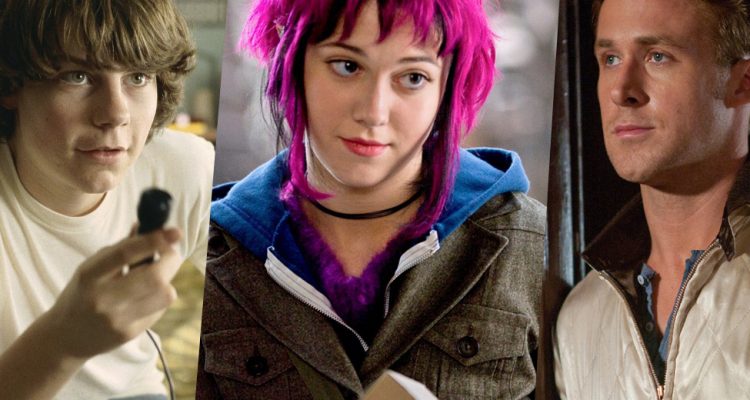 10. “Hustle & Flow” (2005)
10. “Hustle & Flow” (2005)
Memphis is one of the great hip-hop cities, but for a long time the town didn’t have the great hip-hop movie to reflect that. Then came “Hustle & Flow,” a film that famously won Three 6 Mafia an Oscar (prompting Jon Stewart’s famous quip immediately after: “Martin Scorsese, zero Oscars; Three 6 Mafia, one”), but which has depths reaching beyond “It’s Hard Out There For A Pimp” and which captures the southern flavor of rap in a way that few other films have done before or since. Craig Brewer’s film is great at showing the actual process of putting a track together, and the music live up to that: while not many of the artists featured ever broke through into the mainstream, it paints something like a definitive portrait of the Memphis and Atlanta scenes at the time, with P$C, E-40 and Al Kapone providing some of the highlights, along with tracks by Terrence Howard’s character Djay that are significantly better than you’d expect from most fictional artists.
 9. ”Marie Antoinette” (2006)
9. ”Marie Antoinette” (2006)
Vilified on release but having attained a small degree of retrospective rehabilitation by now, Sofia Coppola’s unexpectedly brash follow-up to the universally adored “Lost in Translation” also boasts a similarly atypical soundtrack. Gone are the gauzy Air-y synths with which she was probably most associated. Instead, we get a riotous blend of post-punk and new wave hits from All Your (ahem, “My”) Favorite ’80s Bands: Siouxie and the Banshees, New Order, The Cure and particularly memorably, Adam and the Ants. But there are also plenty of more modern cuts, from Aphex Twin, Dustin O’Halloran and The Strokes, as well as a brief nod to the film’s actual setting in 18th century France with a couple of baroque chamber pieces. It’s a fascinating jumble of anachronisms that can seem arbitrary at first glance, but which start to make a peculiar kind of sense the more you live with it, with the excesses of one period echoing and reflecting those of another.

8. ”O Brother Where Art Thou?” (2000)
We’re not sure anyone could have predicted that we’d all enter the shiny new millennium humming tunes popularized at the beginning of the previous century and before, but if the 8x platinum success of the soundtrack album to the Coens’ loose-limbed riff on The Odyssey proves anything, it’s that everything old can be made new again. From jaunty flagship track “I Am A Man of Constant Sorrow” to the modern recordings of traditional songs of mourning by contemporary country musicians (Emmylou Harris, Alison Kraus and Gillian Welch’s rendition of “Didn’t Leave Nobody But The Baby” still has the power to make hair stand on end), the album is a testament to the acumen of producer T-Bone Burnett. Commissioned by the Coens before filming even began, the shimmering, unfamiliar but eternal-feeling soundtrack has comprehensively eclipsed the film itself.
 7. ”High Fidelity” (2000)
7. ”High Fidelity” (2000)
Still a high watermark for transposing an initially English story into an American setting, Stephen Frears‘ “High Fidelity” took Nick Hornby‘s London-set novel, plonked it down in Chicago with an American lead (John Cusack) and somehow lost none of its bittersweet, arch insightfulness in the move. In fact, it could be argued that having the protagonist be part of the Chicago music-snob scene lends it a different flavor and certainly heavily influenced one of the most enjoyable and well-curated soundtracks on this list. The film’s theme of the consolations but also the limitations of musical elitism leads to a bevy of lesser-known tracks from huge artists like Bob Dylan, The Kinks, The Velvet Underground and Stevie Wonder, while hip contemporary acts like Beta Band and Stereolab also get a look in, not to mention a truly barnstorming performance of “Let’s Get It On” by Jack Black fronting fictional band Barry Jive and the Uptown Five.
 6. “Morvern Callar” (2002)
6. “Morvern Callar” (2002)
All of the films here have music in the marrow of their bones, but none to the extent of “Morvern Callar,” Lynne Ramsay’s utterly distinctive second feature based on the novel by Alan Warner. The film is propelled along by a mixtape, one of a series of gifts left to the title character (Samantha Morton) by her boyfriend who’s just killed himself (the other major one being his unpublished novel, which she claims as her own). It’s an almost experimental, basically interior film, but one of the ways that Ramsay lets us into Morvern’s head is through that mixtape, a cooler-than-cool collection taking in Aphex Twin, Can, Stereolab, The Velvet Underground, Lee “Scratch” Perry and Nancy Sinatra and Lee Hazlewood’s “Some Velvet Morning.” Whereas some films’ soundtracks date immediately, Ramsay’s still feels ageless, and turns out to be a deceptively romantic and utterly crucial part of one of the best films of the ’00s.

